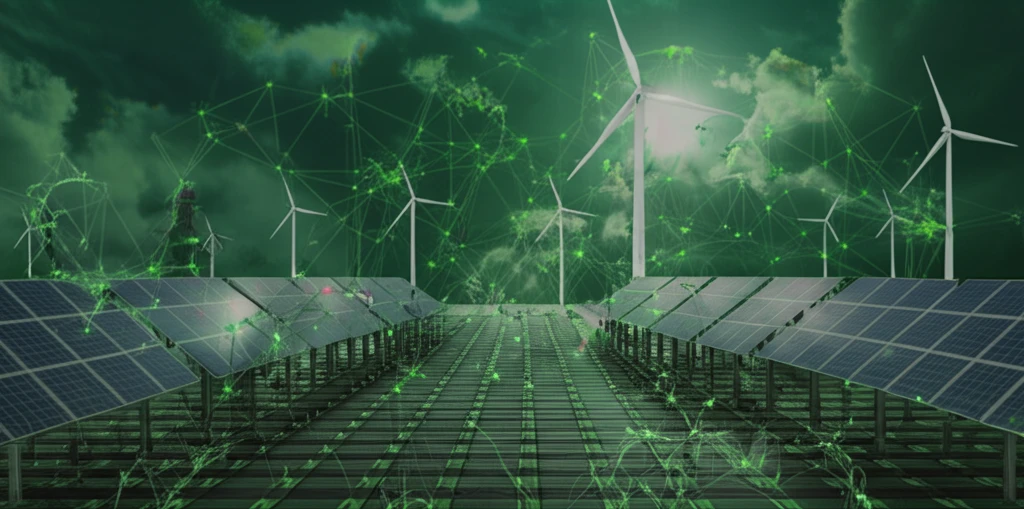
Powering Tomorrow: How AI is Revolutionizing Renewable Energy Accommodation
"Unlock the potential of AI and LSTM networks to optimize renewable energy integration and build a sustainable future."
The global shift towards renewable energy sources like wind and solar power is undeniable. As countries strive to meet ambitious climate goals, the integration of these intermittent energy sources into existing power grids presents significant challenges. One of the most pressing issues is 'renewable energy accommodation' – essentially, ensuring that the energy generated from these sources can be efficiently used and doesn't go to waste.
In regions experiencing rapid growth in renewable energy capacity, the curtailment of wind and solar power has become increasingly prominent. This means that a portion of the generated renewable energy is deliberately not used, often due to limitations in grid capacity or operational constraints. This not only represents a waste of valuable green energy but also hinders further development and investment in renewable energy projects.
To address this critical issue, researchers are turning to advanced technologies like Artificial Intelligence (AI) and Long Short-Term Memory (LSTM) networks. These sophisticated tools offer a promising pathway to optimize renewable energy accommodation, enabling a more reliable, efficient, and sustainable energy future. The focus? To predict, adapt, and ensure every electron from renewable sources counts.
AI and Renewable Energy: Solving the Accommodation Puzzle

Renewable energy accommodation is not a simple task. It requires a comprehensive understanding of various factors, including the fluctuating nature of renewable energy sources, the capacity of the power grid to transmit electricity, the overall demand for electricity (load), and the operational capabilities of conventional power plants. Accurately predicting and managing these variables is crucial to maximizing the use of renewable energy.
- Renewable Energy Output: Understanding the expected power generation from wind and solar farms.
- Grid Capacity: Assessing the transmission capability of power lines.
- Load Demand: Predicting electricity consumption patterns.
- Conventional Unit Capabilities: Knowing the operational constraints of traditional power plants.
The Future is Bright: AI-Driven Renewable Energy Integration
The integration of AI and LSTM networks into renewable energy management signifies a major step forward in building a sustainable energy future. By accurately assessing accommodation capacity, optimizing grid operations, and reducing energy waste, these technologies are paving the way for a cleaner, more reliable, and efficient energy landscape. As AI continues to evolve, its role in accelerating the transition to renewable energy will only become more critical, ensuring a brighter future for generations to come.
